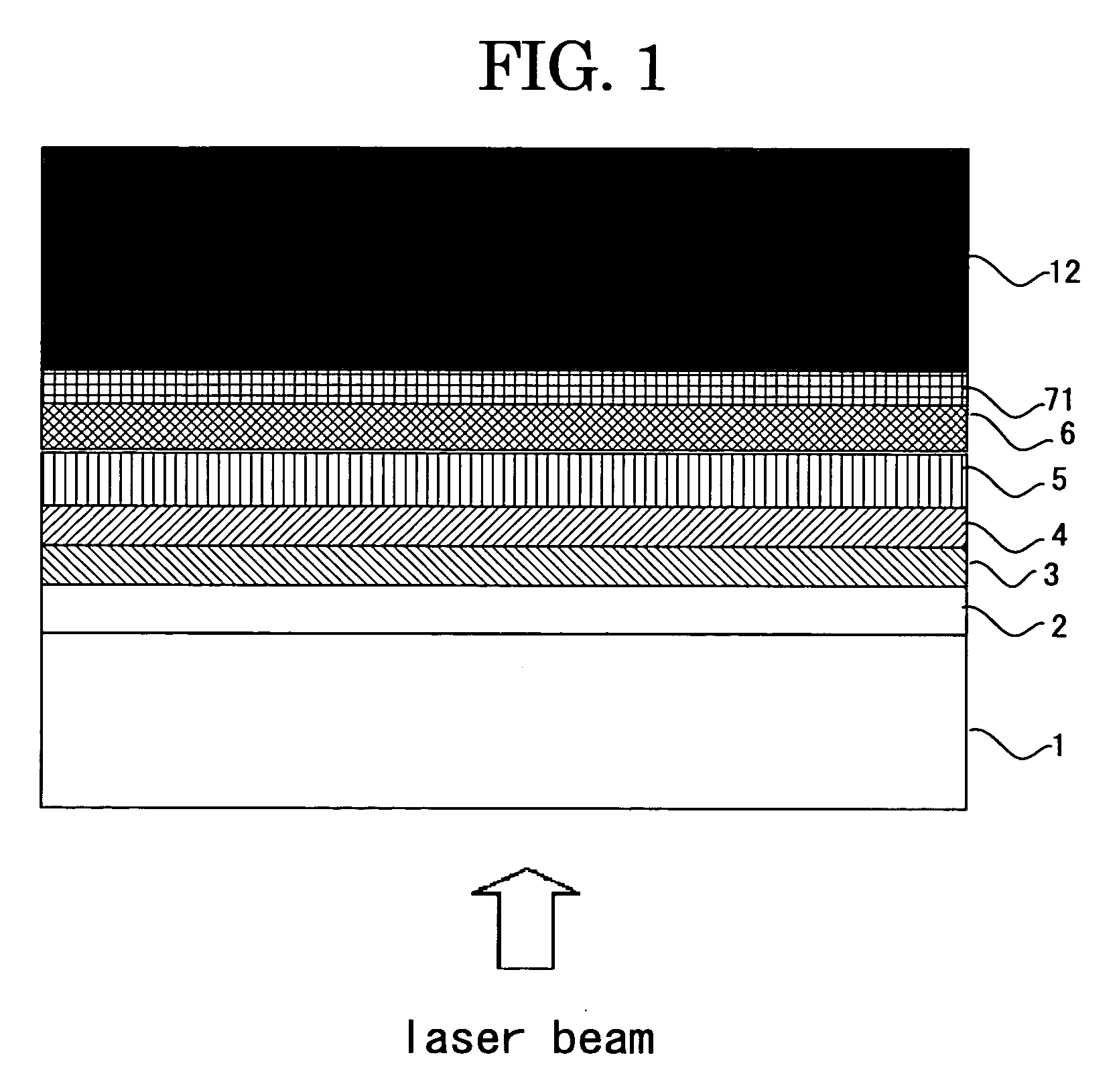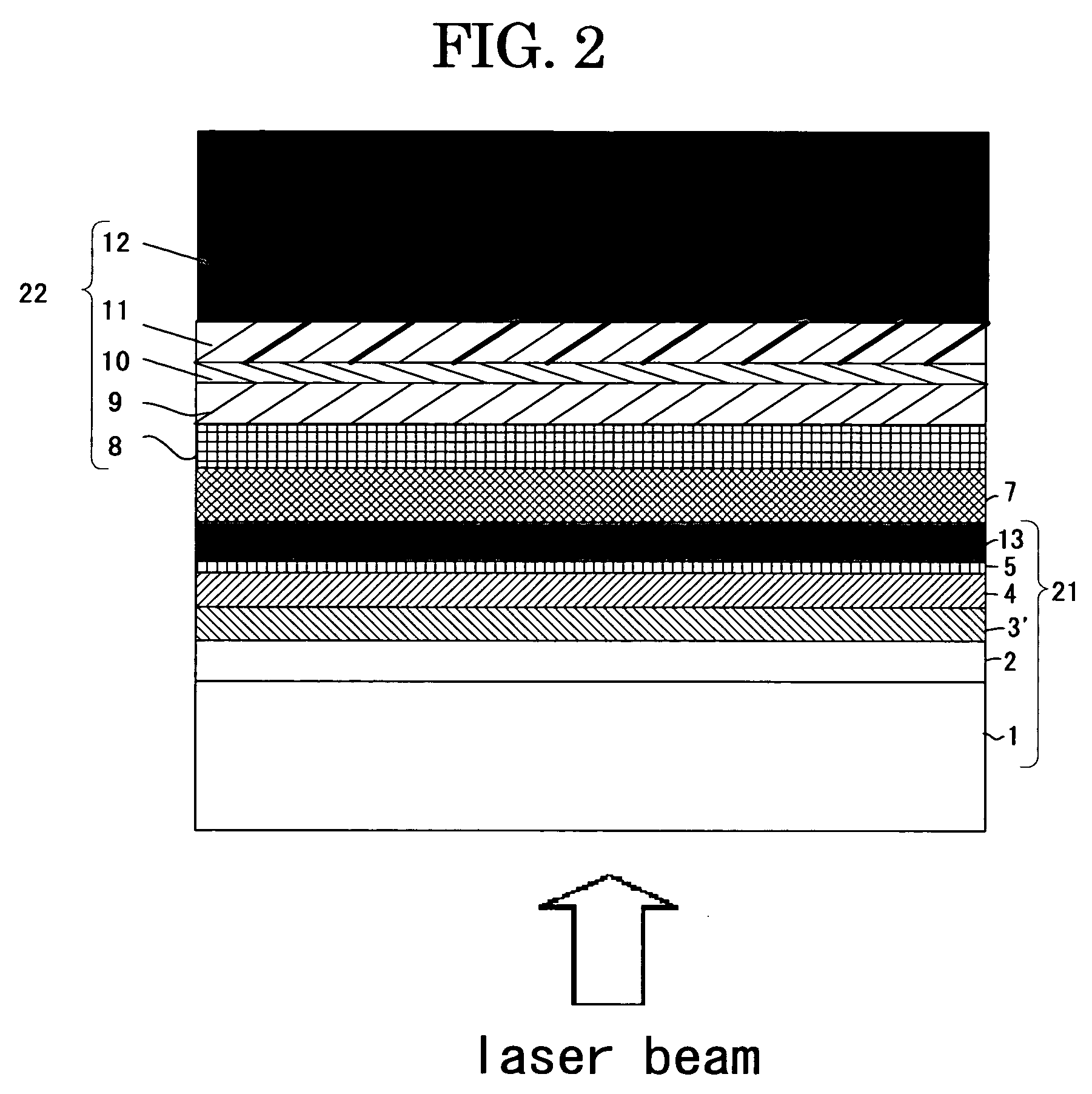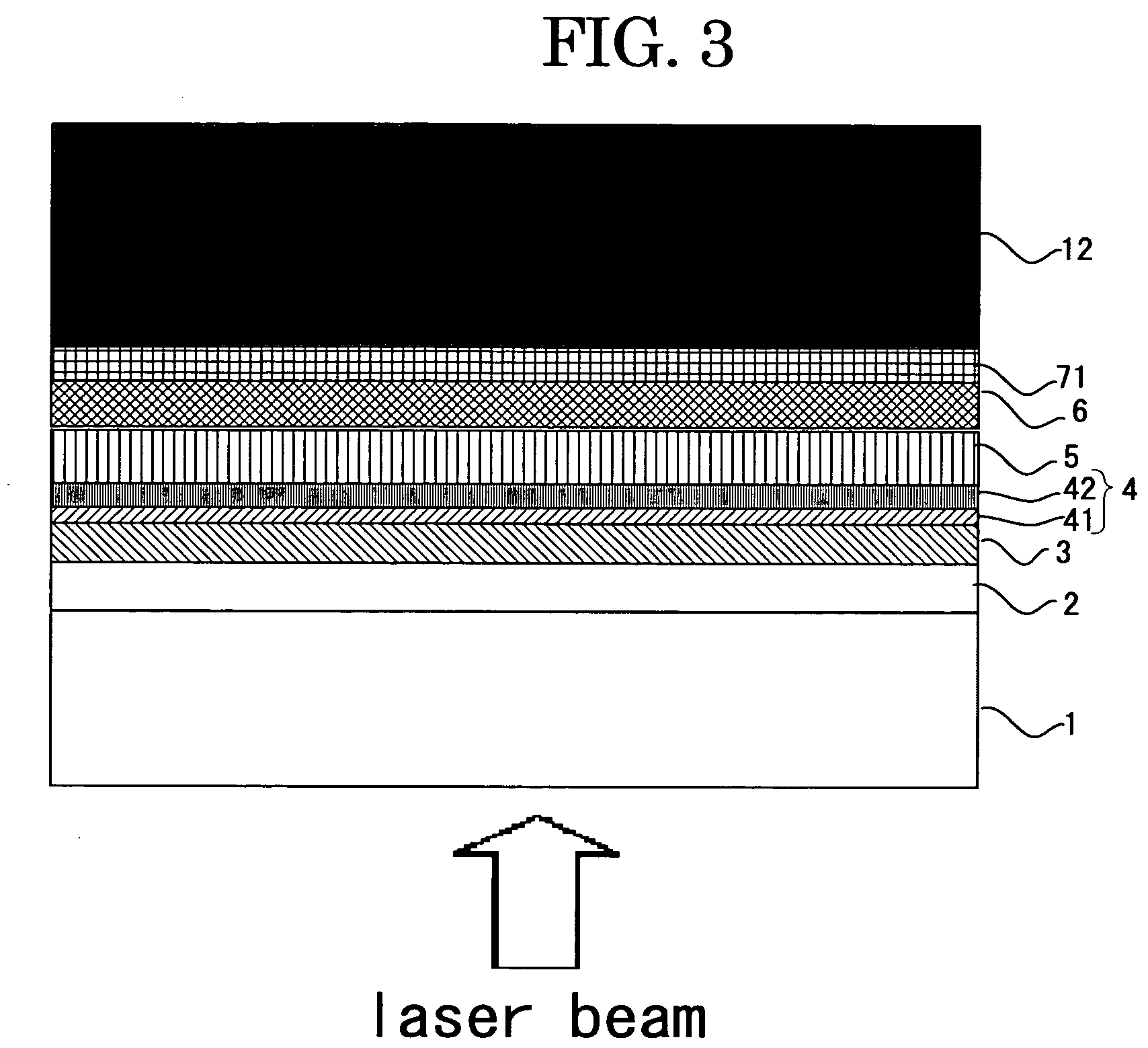Optical recording medium and two layered optical recording medium, recording and reproducing method and recording and reproducing apparatus using media
- Summary
- Abstract
- Description
- Claims
- Application Information
AI Technical Summary
Benefits of technology
Problems solved by technology
Method used
Image
Examples
example 1
[0157] On the first substrate 1 made of a polycarbonate having a thickness of 0.6 mm which has a wobbling continuous groove (having the land and groove having a track pitch of 0.46 μm for the tracking guide) formed on the surface of the substrate, each layer of the optical recording medium was disposed using a magnetron sputtering apparatus.
[0158] The first dielectric layer 2 was produced using a mixture of ZnS and SiO2 (in molar ratio of 80:20) in such a manner that the layer has a thickness of 50 nm. The thermal conductivity of a mixture of ZnS and SiO2 was measured and found to be 0.66 W / m·K.
[0159] The first recording layer 3 was produced using Ge7Sb74.5Te18.5 (coefficients represent the atomic %) in which the recording and erasing can be performed with a linear velocity of 6 m / s in such a manner that the first recording layer 3 has a thickness of 6 nm.
[0160] The second dielectric layer 4 was produced using an oxide mixture dielectric comprising ZrO2 and Nb2O5 (in a mixing mol...
examples 2 and 3
[0180] In Examples 2 and 3, the two-layered optical recording medium was produced in substantially the same manner as in Example 1, except that the material and the thickness of the second dielectric layer of Example 1 was changed to the material and the thickness (respectively in Examples 2 and 3) shown in Table 1 and the produced recording material was evaluated in the same manner as in Example 1. The mixing rate of materials shown in Table 1 is expressed in the molar ratio.
[0181] As the result of the evaluation shown in Table 1, the jitter of each of the produced recording media in Examples 1 to 3 after the 1,000 times repeating of the recording and erasing was so low as 9% or less and the change of the preservation properties thereof after the test for 300 hours was 1% or less. Moreover, the results of the reflectances thereof were 8% and 7.5%, respectively.
examples 4 and 5
[0182] On the first substrate 1 made of a polycarbonate having a thickness of 0.6 mm which has a specified guide groove formed on the surface of the substrate, each layer of the optical recording medium was disposed using a magnetron sputtering apparatus.
[0183] The first dielectric layer 2 was produced using a mixture of ZnS and SiO2 (in molar ratio of 80:20) in such a manner that the layer has a thickness of 50 nm. The thermal conductivity of a mixture of ZnS and SiO2 was measured and found to be 0.66 W / m·K.
[0184] The first recording layer 3 was produced using Ge3.5Sb72Te24.5 (coefficients represent the atomic %) in which the recording and erasing can be performed with a linear velocity of 6 m / s in such a manner that the first recording layer 3 has a thickness of 12 nm.
[0185] The second dielectric layer 4 was produced in Example 4 using an oxide mixture dielectric comprising ZrO2 and Nb2O5 (in a mixing molar ratio of 30:70), in Example 5 using an oxide mixture dielectric compris...
PUM
 Login to View More
Login to View More Abstract
Description
Claims
Application Information
 Login to View More
Login to View More - Generate Ideas
- Intellectual Property
- Life Sciences
- Materials
- Tech Scout
- Unparalleled Data Quality
- Higher Quality Content
- 60% Fewer Hallucinations
Browse by: Latest US Patents, China's latest patents, Technical Efficacy Thesaurus, Application Domain, Technology Topic, Popular Technical Reports.
© 2025 PatSnap. All rights reserved.Legal|Privacy policy|Modern Slavery Act Transparency Statement|Sitemap|About US| Contact US: help@patsnap.com



